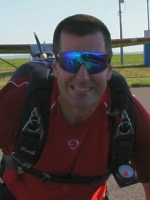Recommended Posts
riggerrob 561
Sorry,
No insult intended by the term "hillbilly engineer."
Rather, I use "hillbilly engineer" as a term of endearment, similar to the way Curtis Pitts called himself a "redneck engineer." That "redneck engineer" sure designed some great aerobatic biplanes!
By that same logic, Steve Wittman would be a "redneck engineer," the sort of intuitive engineer who could design race-winning airplanes on the back of an envelope and build them all himself. Remember that Steve invented the spring leaf landing gear legs that are standard on thousands of production airplanes.
By calling Keystone "hillbilly engineers," I meant that they who could quickly and neatly assemble a workable solution in one tenth the time required by a diplomaed engineer who has spent too long in academia.
IOW a simple gadget that does the job on time and on budget.
I wrote manuals for installing Wire Strike Protection Systems on MBB 105 and BK 117 helicopters. My manuals were mainly about where to bolt cutters and what torque to use.
Another tech writer wrote the supplement - to the pilot's handbook - for WSPS.
If you want to hear a derogatory term, ask Manley Butler to define "african engineering!"
Tee!
Hee!
By the way, what type of helicopters is Keystone building now?
No insult intended by the term "hillbilly engineer."
Rather, I use "hillbilly engineer" as a term of endearment, similar to the way Curtis Pitts called himself a "redneck engineer." That "redneck engineer" sure designed some great aerobatic biplanes!
By that same logic, Steve Wittman would be a "redneck engineer," the sort of intuitive engineer who could design race-winning airplanes on the back of an envelope and build them all himself. Remember that Steve invented the spring leaf landing gear legs that are standard on thousands of production airplanes.
By calling Keystone "hillbilly engineers," I meant that they who could quickly and neatly assemble a workable solution in one tenth the time required by a diplomaed engineer who has spent too long in academia.
IOW a simple gadget that does the job on time and on budget.
I wrote manuals for installing Wire Strike Protection Systems on MBB 105 and BK 117 helicopters. My manuals were mainly about where to bolt cutters and what torque to use.
Another tech writer wrote the supplement - to the pilot's handbook - for WSPS.
If you want to hear a derogatory term, ask Manley Butler to define "african engineering!"
Tee!
Hee!
By the way, what type of helicopters is Keystone building now?
At one time in the early 70's USPA bought the STC rights for 4 jumpers seat belts for C-182's and some C-180's. You could get it for $20 and your N-number. They might know about others too. Dont forget you have the flap switch cover and deflector if its a U-206. There is also a Cessna sky diver step for under the rear door to rotate it paralell to the fuselage. the inside handle at the front of the rear door must go too.
Another guy to try is Joe Weber at Skydive Oregon he does everything like Paul used to.
Another guy to try is Joe Weber at Skydive Oregon he does everything like Paul used to.
amttap 0
Take a look at AC105.2C........lot's of good info there & lists a bunch of the STC's USPA owns. Also;
US Parachute Association, 1440 Duke Street Alexandria VA 22314 United States
SA1-188SA1-188 Removal of right door, right front seat, right control column, and right rear window (optional) and Reissued 1995101810/18/1995
SA1-193SA1-193 Conversion of aircraft for parachute jumping operations. Reissued 1995101810/18/1995
SA217WESA217WE Removal of cabin door to permit aircraft to engage in special operations such as aerial photography, Reissued 1995101810/18/1995
SA4-1593SA4-1593 Removal of door for parachute jumping and aerial photography operations. Reissued 1995101810/18/1995
SA40CESA40CE Removal of left or right door for any purpose. Optical removal of right front seat, with occupant
US Parachute Association, P.O. Box 409 Monterey CA 93940 United States
SA367CESA367CE Removal of right front seat, rear seat, and baggage shelf (if installed). Installation of floor Reissued 1972102410/24/1972
SA874CESA874CE Removal of right front seat, rear seat, and baggage shelf (if in- stalled); installation of floor
US Parachute Association, 1440 Duke Street Alexandria VA 22314 United States
SA1-188SA1-188 Removal of right door, right front seat, right control column, and right rear window (optional) and Reissued 1995101810/18/1995
SA1-193SA1-193 Conversion of aircraft for parachute jumping operations. Reissued 1995101810/18/1995
SA217WESA217WE Removal of cabin door to permit aircraft to engage in special operations such as aerial photography, Reissued 1995101810/18/1995
SA4-1593SA4-1593 Removal of door for parachute jumping and aerial photography operations. Reissued 1995101810/18/1995
SA40CESA40CE Removal of left or right door for any purpose. Optical removal of right front seat, with occupant
US Parachute Association, P.O. Box 409 Monterey CA 93940 United States
SA367CESA367CE Removal of right front seat, rear seat, and baggage shelf (if installed). Installation of floor Reissued 1972102410/24/1972
SA874CESA874CE Removal of right front seat, rear seat, and baggage shelf (if in- stalled); installation of floor



Hey now! I did some engineering work for keystone a few years ago... right before my company bought them. I did some analyses for four STCs. I can tell you that they don't slap anything together... there's a huge amount of engineering work that goes with every STC.
BTW, they're now building entire helicopters.
Out of curiosity, what's in the manual for a wire strike protection system?? Just one big warning?
Dave
Share this post
Link to post
Share on other sites